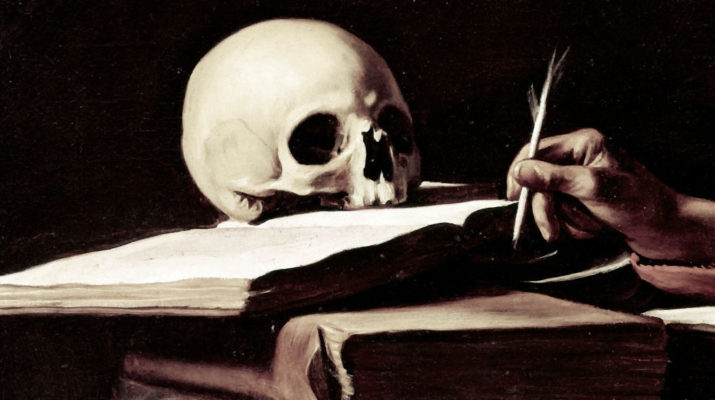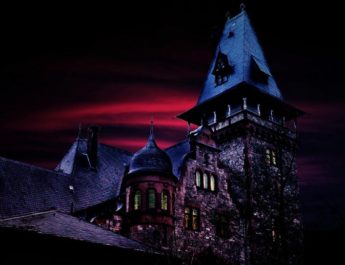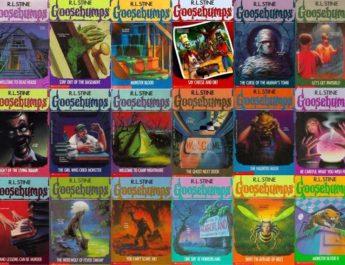Who doesn’t love a good scary story? The kind of tale woven to send chills up your spine and make you feel an overwhelming sense of creepiness seem like there are summoned forth directly from the mind of some master of the horrific. It seems like an impossible task, but really, it’s not. Writing horror stories is really no different than writing either kinds of genre fiction. Like in fantasy, or sci-fi, or noir, there are genre conventions. Eventually you can learn to break these rules, but first let’s take a look at what you need to be doing to write a great horror story.
With that if you have always wanted to write horror stories and don’t know where to start, NitWitty Magazine has you covered. Here are the tips and tricks you need to get started on your very own terrifying opus.
Power (From) the People
There’s a lot of hiding in horror stories. Hiding and running tend to be themes you see a lot of the time. Less often you’ll see somebody try to fight something horrifying, but usually they just get horribly murdered or worse. There’s even a name for this – The Worf Effect. This is all a way of saying that one of the best ways to put your protagonist in a bad situation is to render them powerless. You see this a lot in horror movies, very often because the people involved are high school kids or camp counselors who don’t really have a lot of power in the first place.
This has a fun psychological effect on the characters and the reader. As humans, we like to figure things out. Once upon a time in the steppes we looked at a mammoth and thought, “hey, it’s meat wrapped in clothes, we should kill it.” Then we set about figuring out how to do that really well. The thing is that figuring things out isn’t scary. The last third of a horror movie (the part where the heroes figure out how to kill the monster) is really boring. That’s specifically because the heroes have retaken their power back. If you can keep your protagonists in a state where there is basically nothing that they can do, it means that there will always be a source of tension.
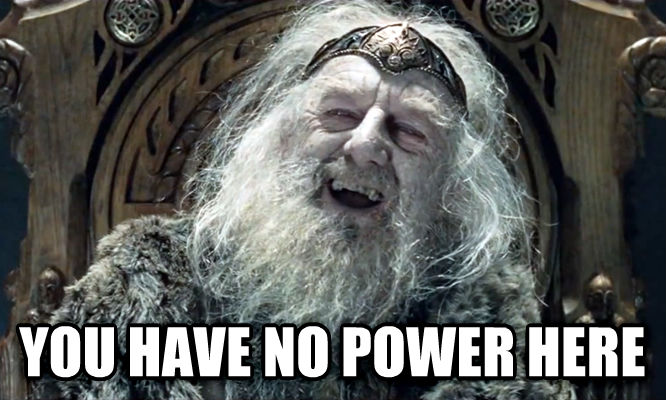 What’s interesting is that you don’t need to make your protagonist powerless, you just need to make it so that their particular skills are rendered useless. Or if you really want to get fun, make it so that your protagonist’s skills are an active hindrance. An example of this is in The Skeleton Key. While being a terrible film it actually used this reverse to great effect. Throughout the film the main character learns about the power of voodoo magic in an effort to save a dying man. However, the more she knows the more susceptible she becomes to falling prey to it, since she needs to believe in the magic for it to work. In other words, even as the screenplay leads you to believe that she is going to learn everything and save the day all she really does is damn herself. It leaves the ending in a state of unresolved suspension which is wildly unnerving for the audience, and probably the best trick the movie pulls off.
What’s interesting is that you don’t need to make your protagonist powerless, you just need to make it so that their particular skills are rendered useless. Or if you really want to get fun, make it so that your protagonist’s skills are an active hindrance. An example of this is in The Skeleton Key. While being a terrible film it actually used this reverse to great effect. Throughout the film the main character learns about the power of voodoo magic in an effort to save a dying man. However, the more she knows the more susceptible she becomes to falling prey to it, since she needs to believe in the magic for it to work. In other words, even as the screenplay leads you to believe that she is going to learn everything and save the day all she really does is damn herself. It leaves the ending in a state of unresolved suspension which is wildly unnerving for the audience, and probably the best trick the movie pulls off.
Of note is that while you are taking away power, it is important not to take away agency. Once a character can’t do anything useful, then the reader no longer gives a shit about them and starts rooting for the monster. Even if they can’t do anything, it is important that they at least try. Plus this gives you an excuse to write them into situations that are scary, which is great.
Be Coy with Details
The biggest reason for this is how horror fiction actually works. When a reader is enjoying a story, their mind will fill in the gaps. What’s interesting is that a reader will fill in those gaps with their own biases, and their own fears. Not to get too meta, but this means that the actual narrative is happening somewhere in between the words on the page and the reader. They are collectively creating the very thing that is scaring them. But in order to do this you need to leave holes where some details would go.
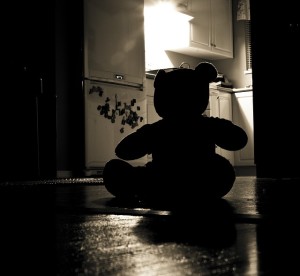
A couple of caveats regarding holding back details. First of all, as a writer you do in fact need to know them. It’s not enough to just be vague and hope for the best, you actually need to do the homework. Then it’s a matter of selectively choosing what to show and what to withhold in order to create the most tension. Secondly, it’s key to actually show the details that are relevant to the plot. If your monster (or whatever) has some special characteristic, that needs to be shown if it is plot relevant. It’s not necessary to explain every single thing about how it works, but readers should know that something is happening, and their scared brains will color in the lines.
However, a place where it really pays to show detail is in the effects of whatever horror is happening. If you are writing victims, go ahead and be graphic. The language can be poetic, but if a vague thing did a vague thing, it’s not scary – it’s just vague. If there’s a disemboweling tell the reader what it smells like. When somebody has gone mad, give the reader explicit descriptions of the state. Remember that the effect of horror is to deaden the senses. Describing the effects of what’s going on also allows the reader to fill in more of the details about the scary thing themselves, and they will generally do a great job of it.
For a fantastic example of this, let’s look at China Miéville’s Perdido Street Station. Here’s an attack by one of the scariest things I’ve come across in a long time: a Slake-Moth:
…her eyes bulging as more and more of the tongue disappeared into her.
And then Isaac saw something flicker under the skin of her scalp, bulging and wriggling and rippling beneath her hair and flesh like an eel in mud, saw a movement that was not hers behind her eyes, and he watched mucus and tears and ichor pour from the orifices of her head as the tongue wriggled into her mind and just before he fled Isaac saw her eyes dim and go out and the slake-moth’s stomach distend as it drank her dry.
In short, remember that the most terrifying part about a bump in the night, is that all you know is that something made a bump.
Make your Protagonist Likable
It’s key that your protagonist needs to be likable. I know that it’s edgy to write main characters who are dicks or otherwise have no redeeming qualities, but I don’t want to see these people in a horror story. One of the things that really makes horror pop is that you get worried about the characters, and it’s really hard to care about unlikable characters.
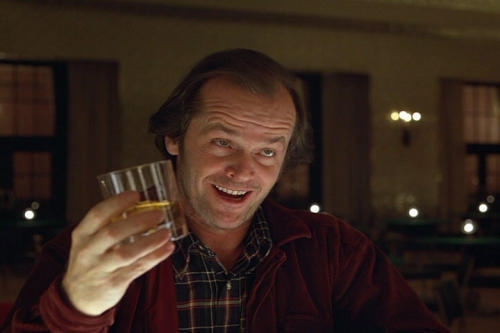
For this we look at the master of horror – Stephen King. His writing has a lot going for it, but one of the things that he does a really excellent job of doing is to spend a lot of time creating characters that are interesting and likable. A wonderful example of this is The Shining. In that story a recovering alcoholic named Jack Torrance and his family go to watch over a hotel called the Overlook in Colorado. While there the spirits that haunt the hotel begin to slowly drive Jack insane and he attempts to kill his family. At it’s core it’s a story about sinister urges to hurt loved ones, but what makes it so scary is the first half of the book. You see, very little actually happens before the family arrives, and nothing horrifying happens in the first 100 pages. Instead what King does is create a family that is interesting, with a back story and defined relationships. So in the back half of the book when Jack goes insane, we feel for him and we are horrified by what happens because we like these people. We want something good to happen to them.
A variation of this is when stock archetypes are used in horror films. Using types like Jock, Nerd or Cheerleader allows the filmmakers to short circuit the part where they need to spend a lot of time making the characters likable. Odds are that the audience is likely to associate themselves with the archetype that they most identify with, which makes them want to root for that person to make it out alive. In other words, they project themselves into the archetype.
Of course, it’s possible to write a story where bad things happen to bad people, but it’s possible that you are now writing a story with a gruesome anti-hero, which isn’t really a scary story. Hannibal by Thomas Harris (not the dreadful follow up) falls into this category. While it is true that some horrifying things happen, they happen to people that we are meant to actively loathe. When they are written as terrible people, we just hope that Hannibal Lecter kills them in inventive ways. There’s nothing wrong about that per se, but just understand you’re not writing horror stories anymore.
Take It Slow
“Then he got stabbed,” is boring, and if you’ll forgive me for the pun – to the point. When you are writing horror stories something to keep in mind is that the slower something is, the more tension that you are able to wring out of every single action. Basically, the longer you can hold off giving the reader information or keep them from knowing the outcome for an action, the more engrossed they are going to be.
A good way to do this is to add details to slow down the course the the narrative. Let’s take these two examples:
- “He walked across the room, towards the shadow.”
- “With hesitant steps, he moved towards the shadow on the far side. Below his feet the creaking of the floorboards betrayed his every step, although the blood pounding in his ears was louder by far.”
First of all, yeah, the prose in that second example is a little purple. But more important is that the second sentence reads a lot slower. I’m able to use details in the writing that forces the reader to take a moment, which means that in real time I can control the flow of information. If you want actions to fast, shorten up your sentences. If you want them to take longer (or in the case of the Perdido Street Station quote above – feel like they won’t end). But keep in mind that control is key. All short sentences sound weird, and if everything is long it starts to be tiresome. This isn’t the only technique either. In regular stories you can control the flow of time with dialog.
“What do you mean?” the readers asked themselves. “I don’t know what he’s talking about,” they said. “Oh, if you have actions in between dialog words,” they considered with a scratch on head, “it makes it seem like there was a pause in the dialog.”
Controlling the tempo is probably one of the hardest things for fiction writers to do, and is even harder when writing horror stories. But having that in your toolkit, and being able to slow down the story when you need to, and speed it up when you want to is really something that will make your writing better as a whole.
So now, you have a short primer on writing horror stories. Stay tuned all month as our crack team of writers put these tips to the test and create tales that titillate and keep you up late, worried about what that noise was. In the meantime go ahead and get writing. It’s the perfect time of year.

